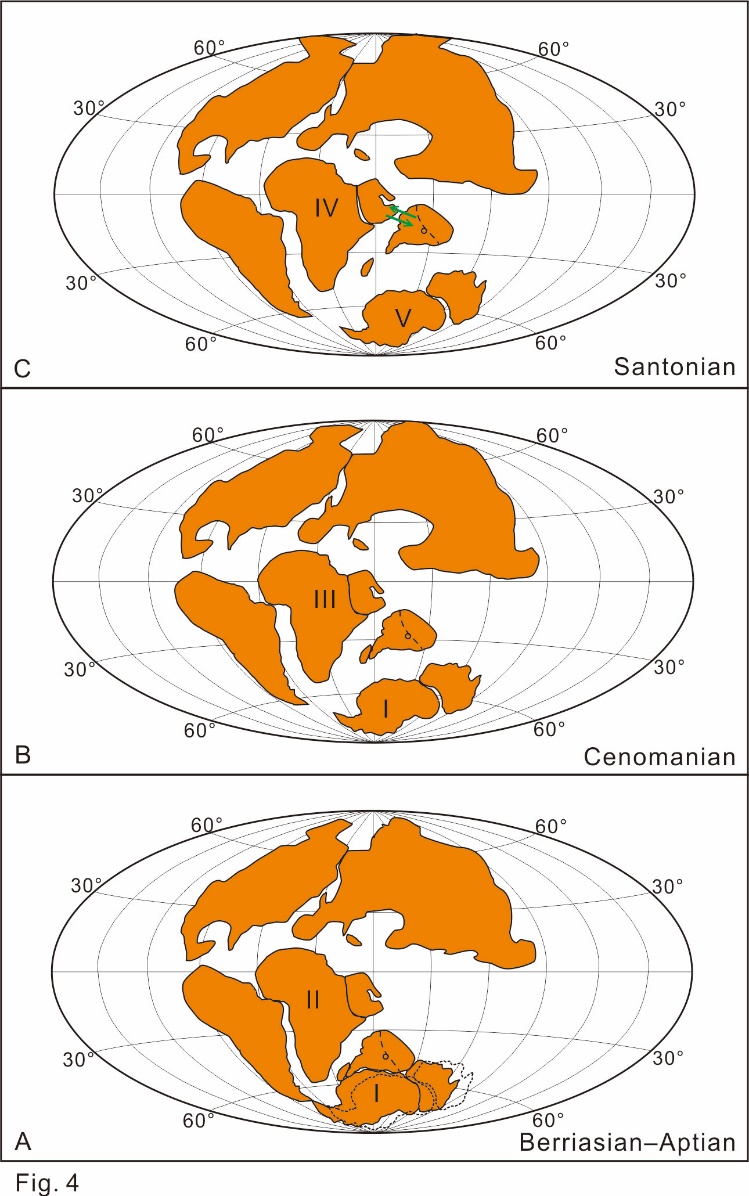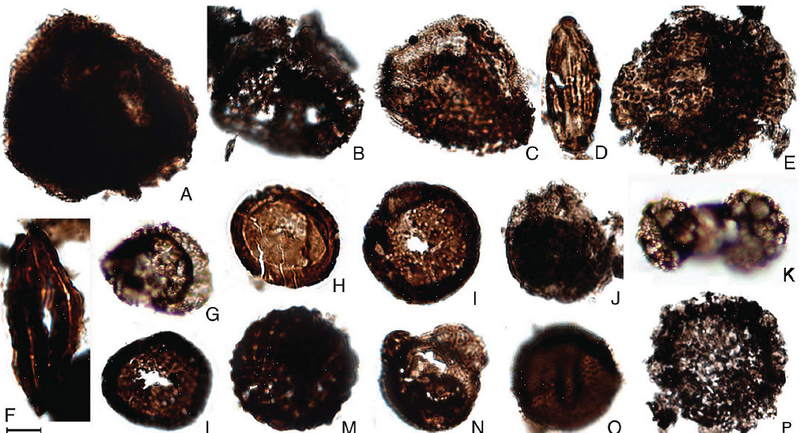The separation and northward drifting of the Indian plate from Gondwana to collide with Eurasia during the late Mesozoic and early Cenozoic was an important event in the Earth’s history, which has shaped the modern landform and environment of the Eurasian continent. Evidence of this plate motion has been largely derived from palaeomagnetism, with little from palaeontology.
Recently, researchers at Nanjing Institute of Geology and Palaeontology, Chinese Academy of Sciences restored this plate motion history in detail by using the pollen and spore fossils in southern Xizang, China.
The researchers sampled a continuously deposited section of the Cretaceous in southern Xizang with high resolution. They first established a fine chronostratigraphic framework for the study profile through fossils of sporopollen and dinoflagellate cysts and then compared the terrestrial palynoflora of southern Xizang with that of Australia and Africa at different stages.
The result shows that terrestrial floras of southern Xizang, which was situated at the northern margin of Indian plate, clearly changed from having connections with Gondwana during the Early Cretaceous to North Africa during the Late Cretaceous. The assemblages were initially similar to those from Australia in early Early Cretaceous but differed from the latter since Albian. Their differences are increasingly apparent through the Albian–Cenomanian transition. Since then, the palynomorph assemblage from southern Xizang was neither comparable to that of Australia nor Africa, showing the Indian Plate started its northward drifting as an isolate land block. The arrival of the Indian plate in equatorial regions allowed floral exchange between its northern part and North Africa during the Coniacian and Santonian.
The rate of evolution of the Xizang palynoflora was about the same as that of Australia prior to the Albian, but faster from the Cenomanian onwards, implying that the tectonic movement of the Indian plate, with a connection to the break-up of Gondwana, was a fundamental driving force behind the palynofloristic changes in the Tethyan region for the Cretaceous Period.
Article informaion: Li, Jianguo*, Wu, Yixiao, Peng, Jungang, Batten, D. J., 2019. Palynofloral evolution on the northern margin of the Indian Plate, southern Xizang, China during the Cretaceous Period and its phytogeographic significance.Palaeogeography, Palaeoclimatology, Palaeoecology. DOI: http://dx.doi.org/10.1016/j.palaeo.2017.09.014

Restoration of the drifting history of the Indian plate based on the palynofloristic evolution of the Indian and adjacent plates from earliest to Late Cretaceous.

Selected representatives in the souterhn Xizang pollen and spore flora.

Comparison of the ratios of inceptions of new genera and species in southern Xizang and Australia at various times through the Cretaceous Period.
